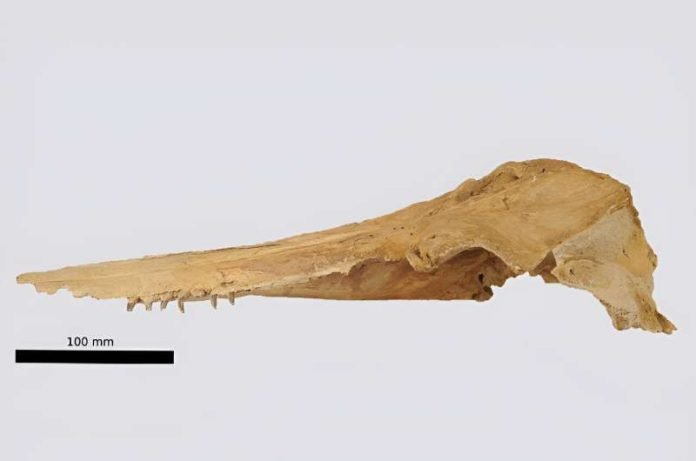
Researchers at the University of Otago in New Zealand have made an exciting discovery in the realm of paleontology, shining a new light on the ancient world of dolphins.
Their work, detailed in the Journal of the Royal Society of New Zealand, introduces us to a fossil dolphin named Aureia rerehua, distinguished by its unique way of catching food.
This discovery was led by Shane Meekin, a recent Master of Science graduate from the Department of Geology at the University.
The fossil of Aureia was unearthed years ago in a quarry in the Hakataramea Valley but only recently received its name and detailed study, highlighting the treasure trove of prehistoric life that resides within the university’s Geology Museum.
Aureia rerehua, as described by the researchers, had a distinctive feeding method compared to its ancient relatives. Instead of using its teeth to strike or pierce its prey directly, Aureia had widely spaced teeth that would clasp around fish, acting like a basket to catch them.
This method is especially interesting because it represents a departure from the more aggressive hunting strategies observed in other ancient dolphins found in the same area.
The fossil itself presents a series of well-preserved teeth, showing how these would have functioned in a manner quite unlike any other known dolphin species.
With a small body size, a fragile skull, and a flexible neck, Aureia was likely adept at navigating the shallow waters of its time, capturing its prey in a delicate, yet effective way.
The name “Aureia rerehua” carries significant meaning, combining the Māori word “aurei” (referring to cloak pins that resemble its teeth) with “rerehua” (meaning beautiful), a nod to both its physical appearance and the cultural heritage of New Zealand.
This naming not only honors the dolphin’s unique characteristics but also embeds it within the rich tapestry of the region’s natural history.
Meekin’s research underscores the diversity of life that once thrived in what is now the Hakataramea Valley, part of New Zealand’s first UNESCO geopark, the Waitaki Whitestone geopark.
This area is recognized for its rich fossil record, offering a glimpse into a past world where a variety of dolphin species coexisted, each adapting to their environment in their own way.
The discovery of Aureia rerehua contributes to our understanding of the evolutionary history of dolphins, demonstrating the wide array of feeding strategies these creatures employed to thrive in their ancient ecosystems.
It also highlights the importance of such fossil finds in piecing together the puzzle of our planet’s biological heritage, reminding us of the intricate balance of life that has shaped our world through the ages.
The research findings can be found in the Journal of the Royal Society of New Zealand.
Copyright © 2024 Knowridge Science Report. All rights reserved.



